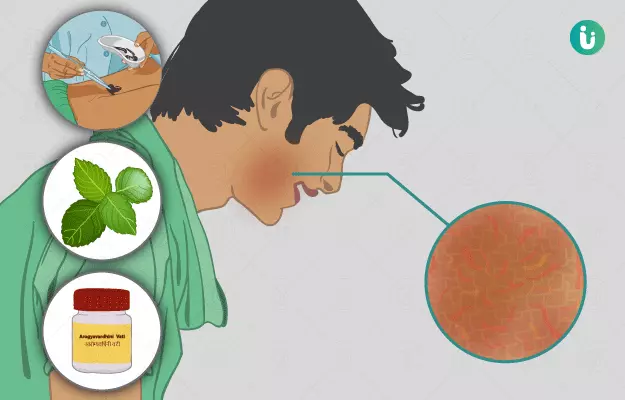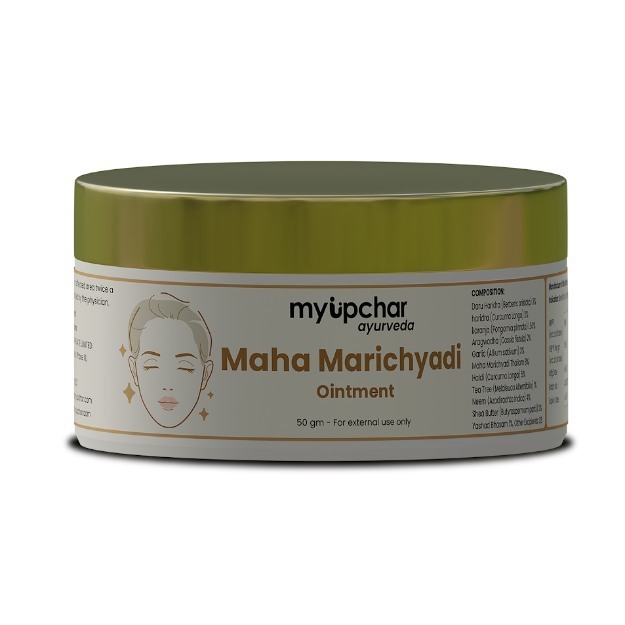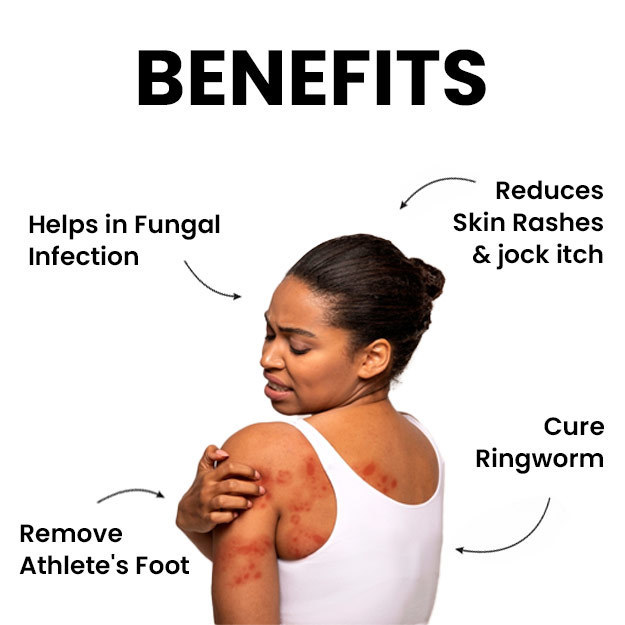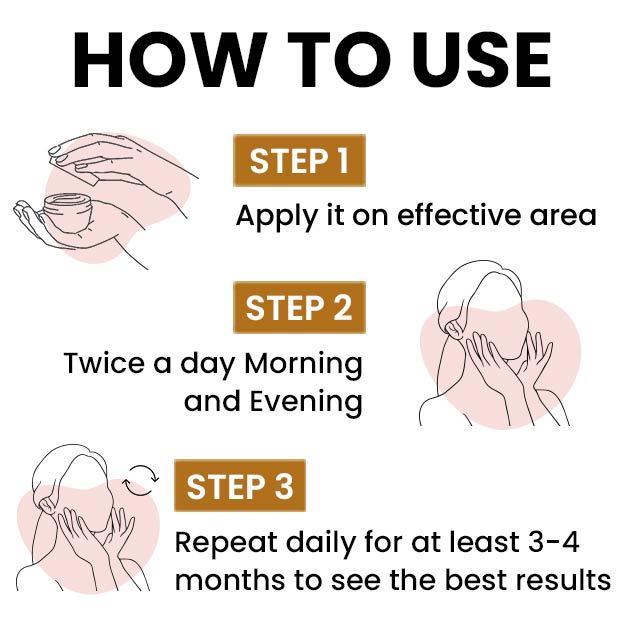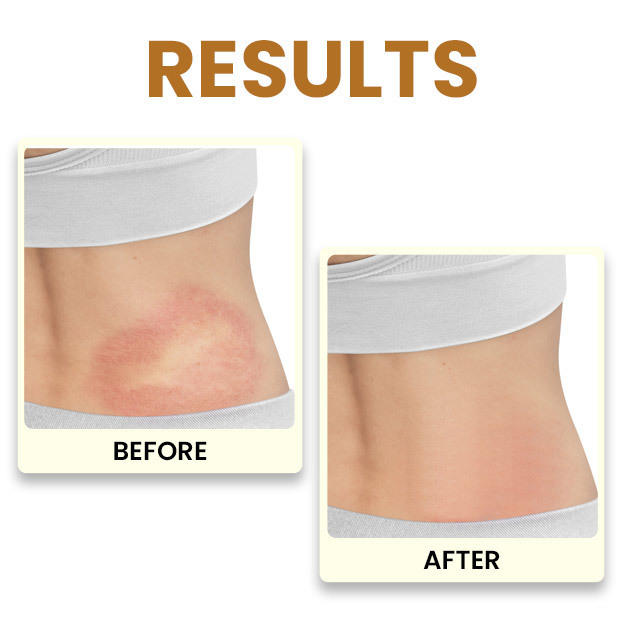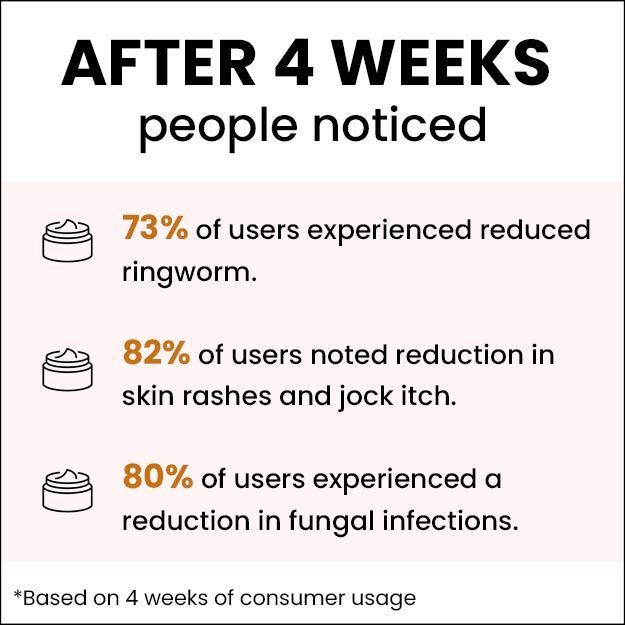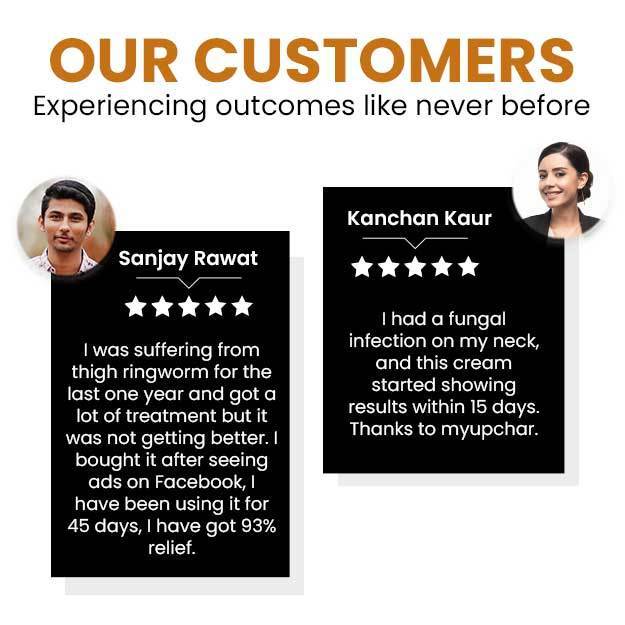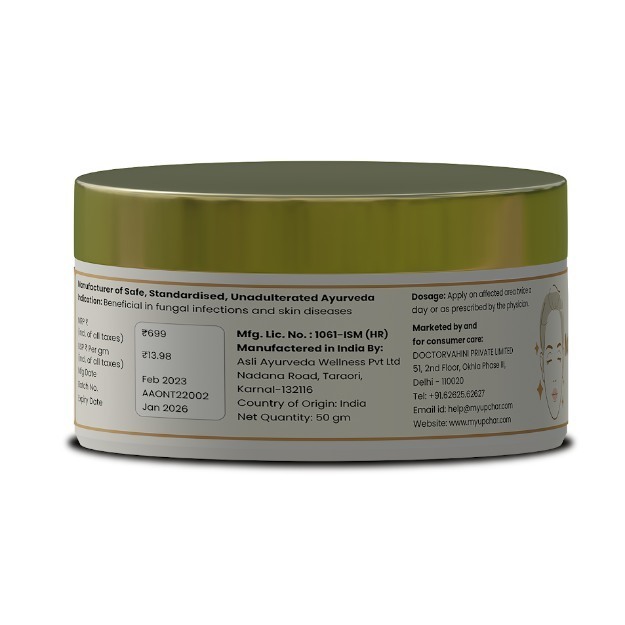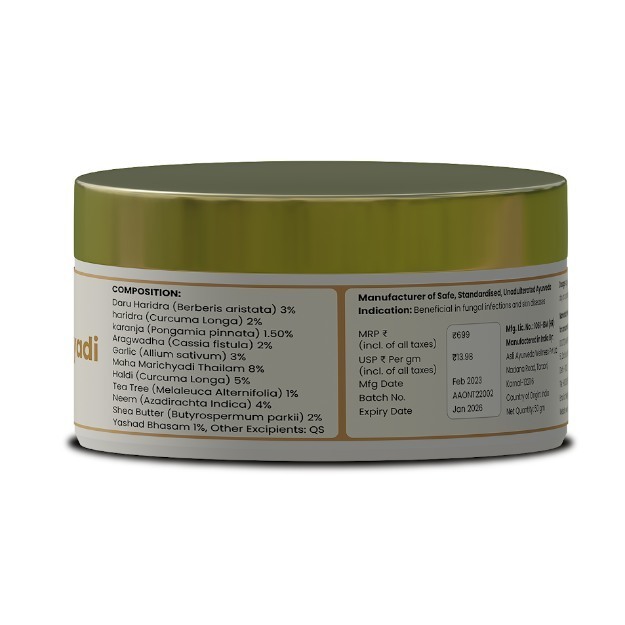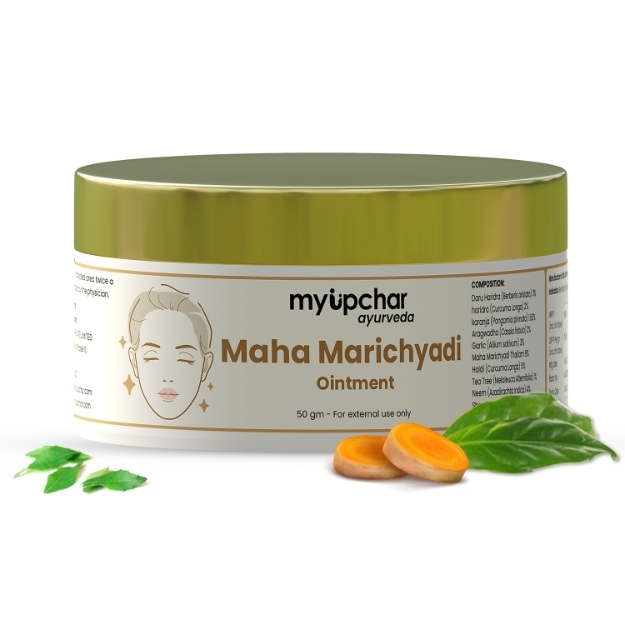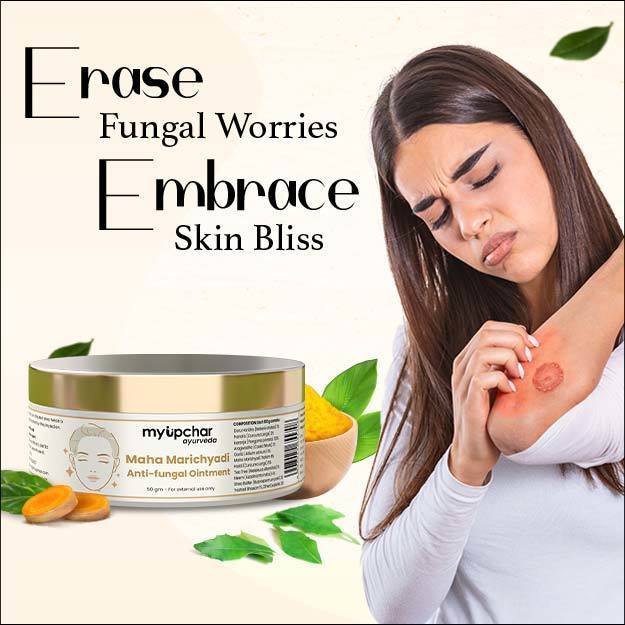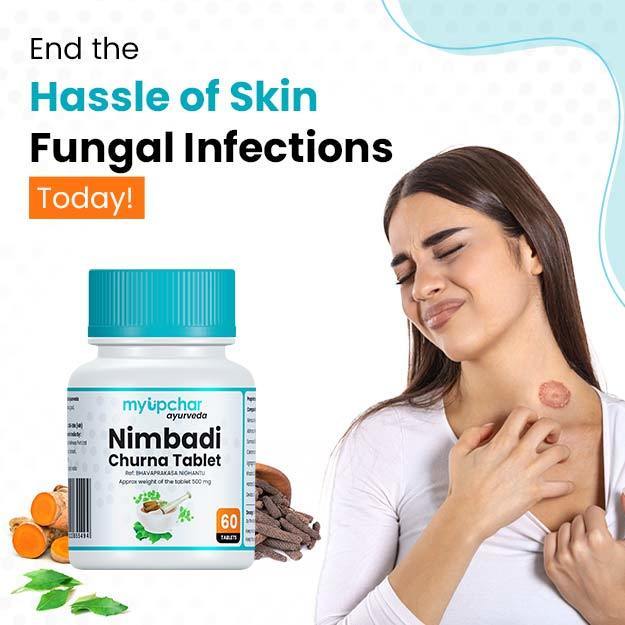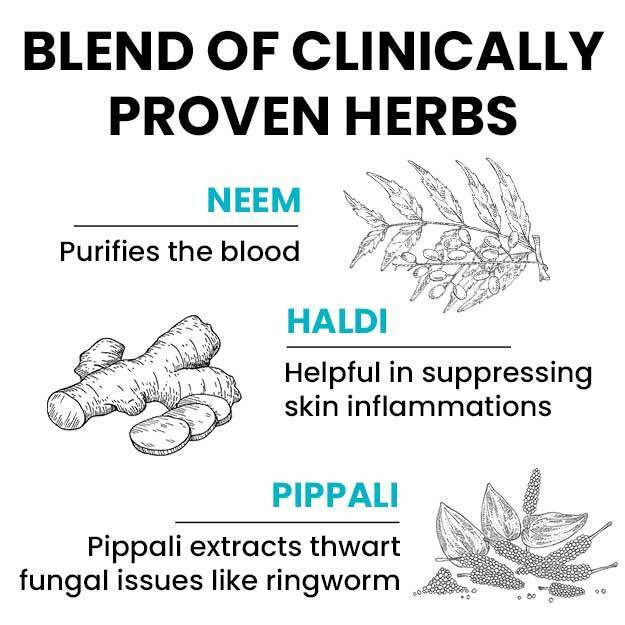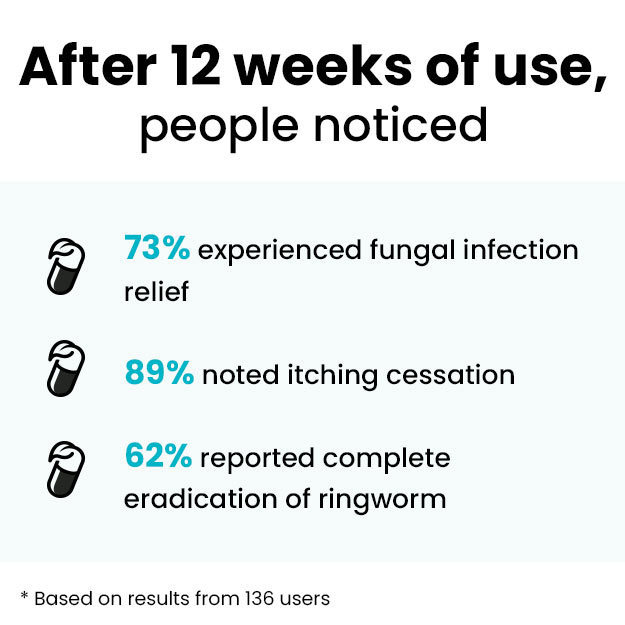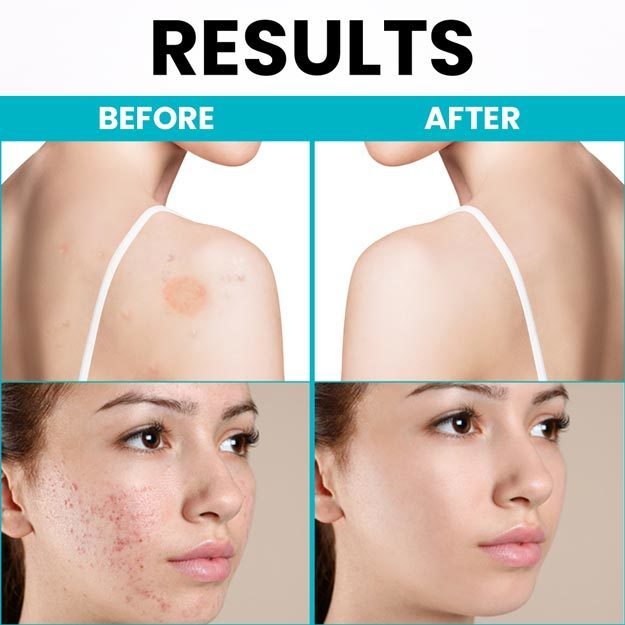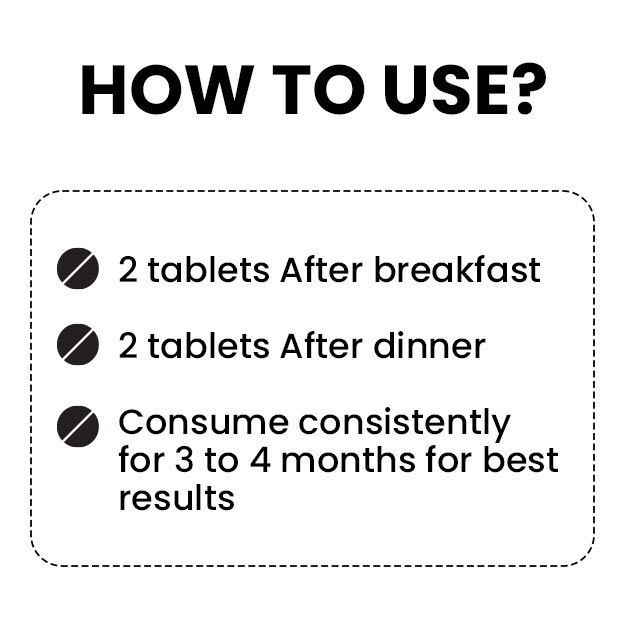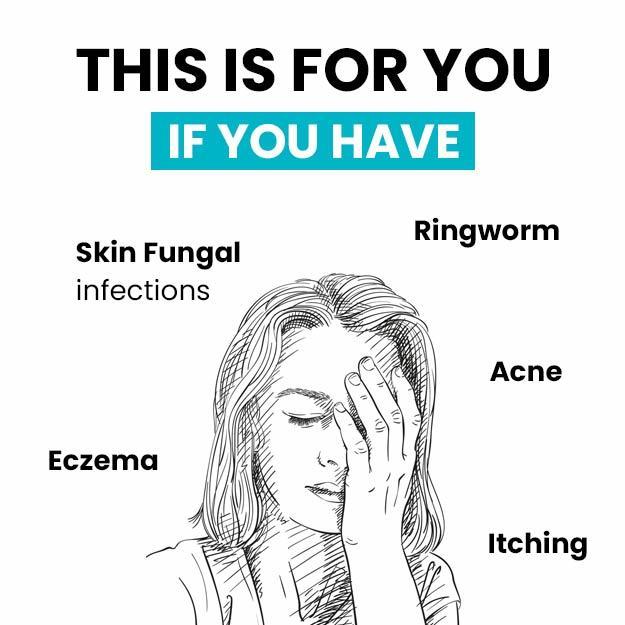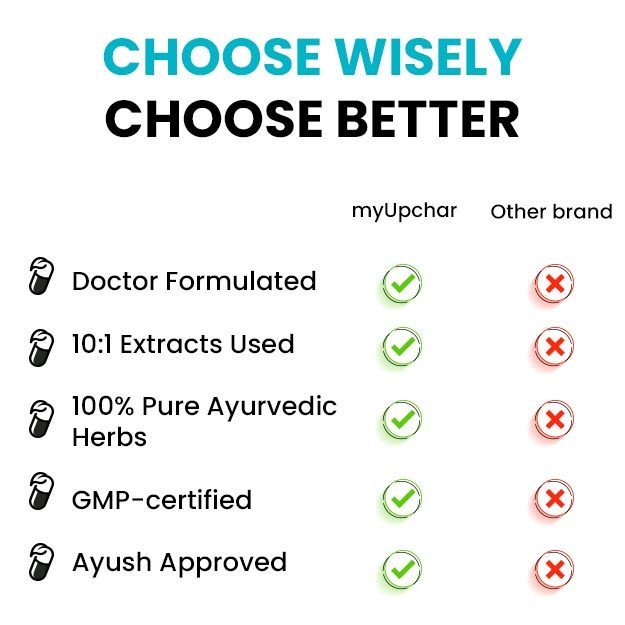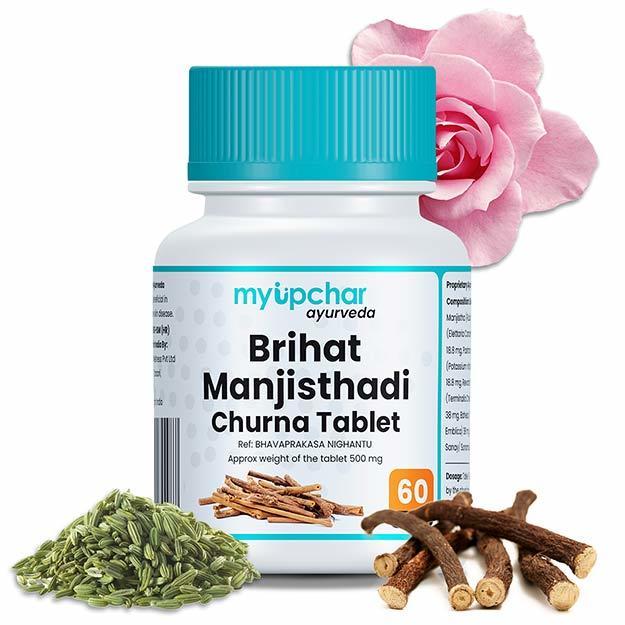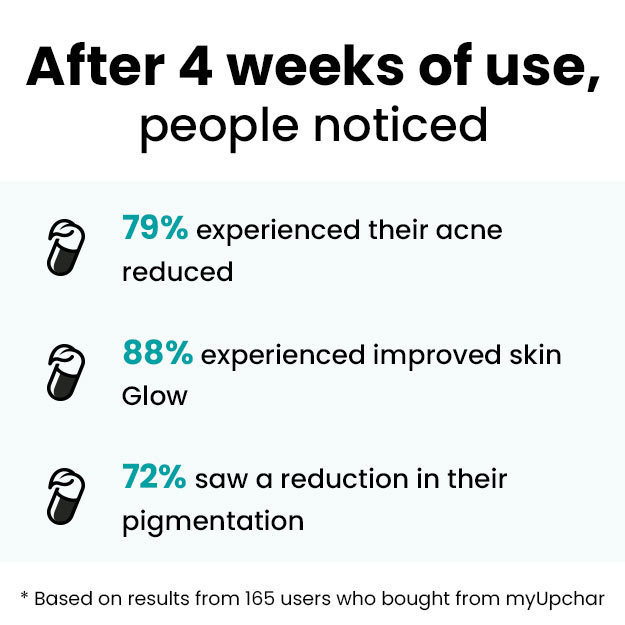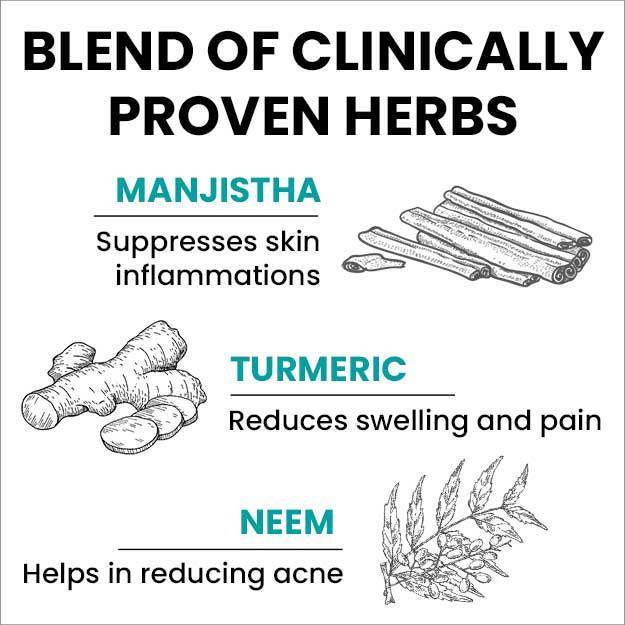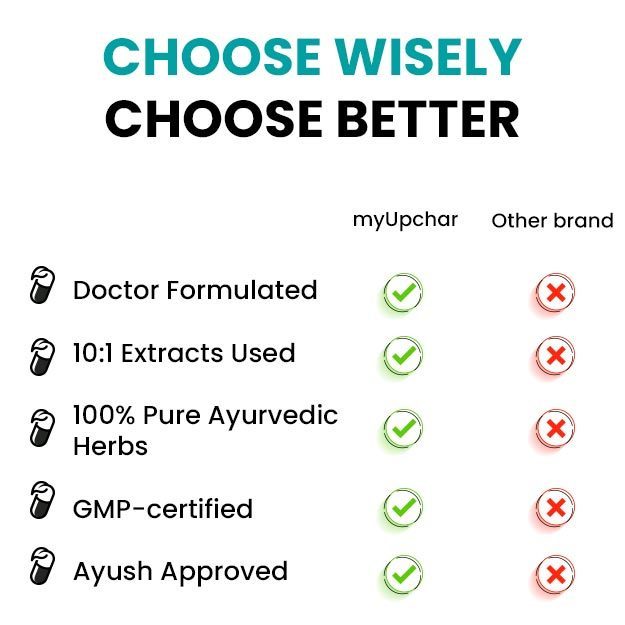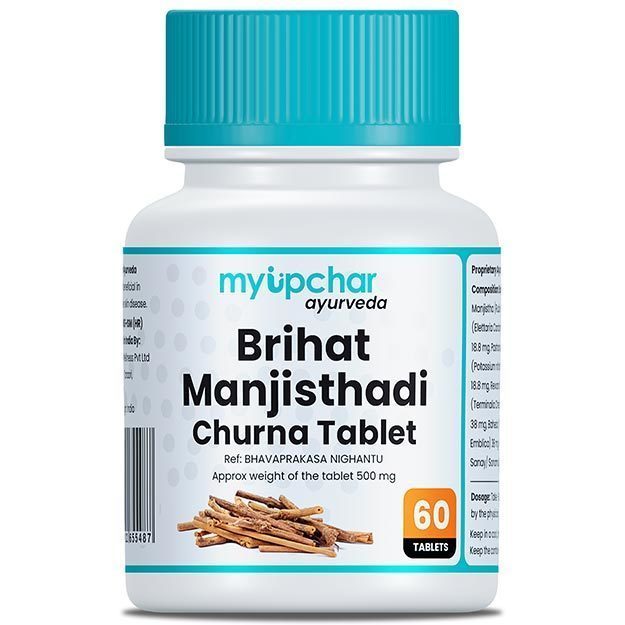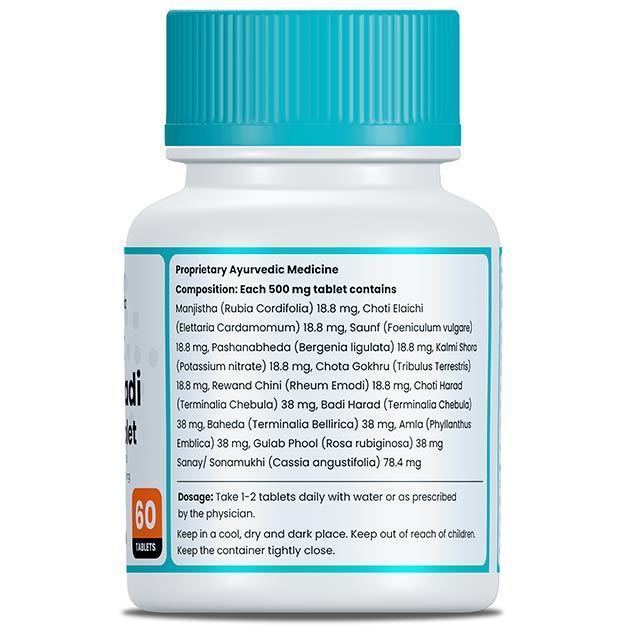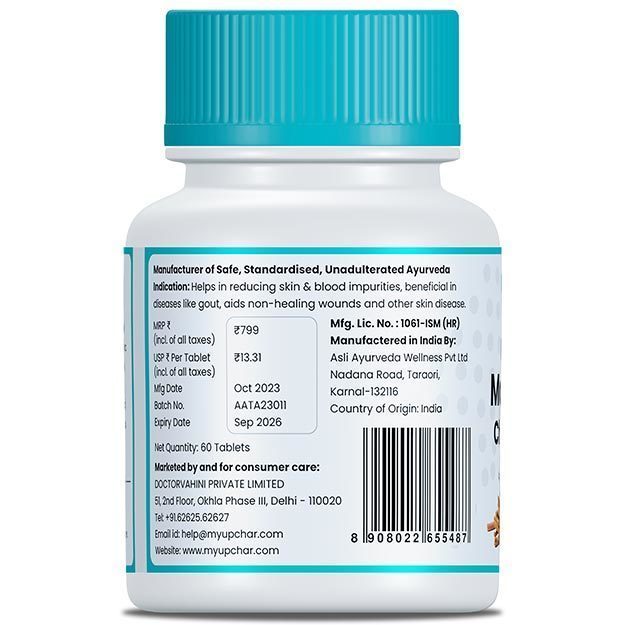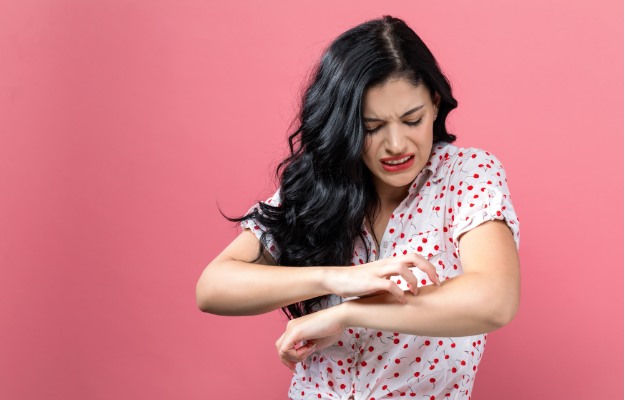Eczema, known as vicharchika in Ayurveda, is a non-contagious and inflammatory disease of the skin that causes itching and redness of the affected areas. The redness also spreads to the unaffected parts around the inflamed area. Eczema can be acute or chronic, though the cause of the condition is not yet known to conventional medicine.
Ayurveda identifies the causes of eczema and describes various treatments like abhyanga (oil massage), vamana (medical emesis), virechana (purgation therapy), rakta mokshana (bloodletting) and lepa (coating the affected body part with medications). Herbs such as neem, haridra (turmeric), kumari (aloe vera) and bakuchi (psoralea) have been used in Ayurveda for their therapeutic effects on eczema. The medicines prescribed by Ayurvedic doctors for treating eczema include arogyavardhini vati, mahatiktaka ghrita, gandhaka rasayana, avalgujadi lepa and rasakarpoora lepa.
- Ayurvedic view of eczema
- Ayurvedic treatment for eczema
- Ayurvedic herbs and medicines for eczema
- Dietary and lifestyle changes for eczema patient as per ayurveda
- How effective are ayurvedic medicines and treatments for eczema
- Side effects and risks of ayurvedic medicine and treatments for eczema
- Takeaway
Ayurvedic view of eczema
As per Ayurveda, eczema has multiple causative factors, and it can affect individuals of all ages. The following factors can cause eczema by vitiating doshas and dhatus:
- Consumption of incompatible food and drinks together, e.g., fish and milk.
- Consumption of heavy foods in excess.
- Suppression of natural urges, especially vomiting.
- Exercising immediately after a meal.
- Rapid change in the environment from cold to hot or hot to cold.
- Excess consumption of fish, sour foods and freshly harvested corn.
- Sex immediately after a meal.
- Improper metabolism of food in the body.
- Disease of the lymphatic system.
- Not undergoing panchakarma (five therapies) when necessary.
The right choice of food and lifestyle can clear the ama (toxins) from the body and help in the treatment of eczema. The various therapies prescribed for the management of eczema also aim at eliminating ama from the body.
Ayurvedic treatment for eczema
- Abhyanga
- This process includes massaging the affected area with a medicated oil infused with the properties of herbs that are effective in treating a condition.
- It improves the circulation of blood, nourishes the body, prevents dehydration and increases the production and supply of antibodies to the areas treated. It helps in faster healing of the condition.
- The commonly used oils for abhyanga in case of eczema include marichyadi taila and mustard oil.
- Vamana
- This process involves the induction of vomiting using various herbs or a combination of herbs. It is a detoxifying process that clears ama (toxins) from the body, which is responsible for most clinical conditions.
- Two types of herbs are used in vamana karma. These include – herbs that induce vomiting and herbs that enhance the effects of vomiting-inducing herbs.
- Vamana is effective in treating skin diseases like eczema, psoriasis and leukoderma. It is also useful in the management of other conditions like rheumatic diseases, common cold, arthritis, sore throat, oedema and epilepsy.
- Virechana
- It is an excellent method to induce purgation, eliminate ama and balance the vitiated doshas in the body.
- Some herbs that are commonly used for virechana are aloe vera, senna and rhubarb. They can be used alone or in combination.
- This procedure eliminates excess pitta and kapha from the body.
- As cleansing weakens the digestive fire, it is not recommended for individuals with vata doshas.
- Rakta mokshana
- It is the process of releasing toxic blood from the body. It is known to give immediate relief in pitta disorders like disorders of the skin (e.g., eczema), liver, spleen, and also treats conditions like headache and hypertension.
- Lepa
- A lepa is a herbal preparation in a semisolid form using ingredients like ghee (clarified butter) and herbs or a combination of herbs to the skin.
- The herbs used for preparation of lepa for various conditions differ depending on the cause and the vitiated dosha.
- Fermentation of chakramarda (foetid cassia), tila (sesame), rai (mustard), and vidanga (false black pepper), the root of kushtha (costus) and fruit of pippali (long pepper) is done in water obtained from curd. This lepa is applied to the affected areas to treat eczema.
Ayurvedic herbs and medicines for eczema
Ayurvedic herbs for eczema
- Neem
- It acts on the circulatory, digestive, respiratory and urinary systems and has astringent (constricts tissues), antiviral, emollient (soothes skin), antiseptic, anthelmintic and stimulant actions. It purifies blood and balances the vitiated doshas in the body, thus treating the condition.
- Various parts of neem plant that are useful therapeutically are flowers, root bark, leaves, bark, fruit, juice and nut oil.
- It is helpful in the treatment of many skin diseases including eczema. Neem also treats other conditions such as arthritis, cough, diabetes, inflammation of the joints and muscles, malaria, nausea, ulcers in the mucous membrane and rheumatism.
- Haridra
- Haridra acts on the digestive, respiratory, urinary and circulatory systems. It has antibacterial, anthelmintic, stimulant, aromatic and carminative (relieves flatulance) properties.
- It acts as a blood purifier, causes healthy blood tissue formation and improves blood circulation. It is known to treat many diseases like jaundice, diabetes, cough, fever, indigestion, oedema and skin diseases.
- Kumari
- Kumari acts on the circulatory, digestive, nervous, excretory and female reproductive systems and has multiple properties including anthelmintic, rejuvenative, expectorant (expels phlegm), alternative, carminative, laxative (regulates bowel movements) and bitter tonic. Various parts of the plant are used to produce different actions.
- External application of the leaf juice of kumari is useful in treating eczema, inflammation and chronic ulcers of the skin. It can also be applied with butter to reduce burning sensation due to ulcers on the skin.
- Bakuchi
- Bakuchi acts on the circulatory, respiratory, muscular and lymphatic systems and has aromatic, anthelmintic, antibacterial, antifungal, laxative and stimulant properties.
- It is one of the primary herbs used in the management of skin diseases like psoriasis, eczema and leukoderma. It is also effective in the treatment of other conditions like fever, internal ulcers, impotence, cold and painful joints and extremities, difficulty in breathing, diarrhoea and abdominal pain.
- Bakuchi can be used both internally and externally in the form of a paste or ointment.
Ayurvedic medicines for eczema
- Arogyavardhini vati
- Arogyavardhini vati consists of loha bhasma (calcinated iron), triphala (a combination of amalaki, vibhitaki [belleric myrobalan], and haritaki [chebulic myrobalan]), tamra bhasma (calcinated copper), shuddha parada (purified mercury), shilajatu (asphaltum), chitrakamool (leadwort root), juice of neem and other herbs in a tablet form.
- It improves the overall health of the body and is recommended to correct and balance vitiated doshas.
- It has been used in Ayurveda for the treatment of various liver diseases as well as all types of skin diseases. This makes it a useful therapy for eczema treatment. It also helps improve appetite and digestion and provides relief from irregular bowel movements.
Shilajit by myUpchar Ayurveda may aid in addressing eczema concerns. Its natural properties support skin health, potentially reducing symptoms.Order Shilajit Capsules and Shilajit Resin now
- Mahatiktaka ghrita
- Mahatiktaka ghrita comproses of katuki (kutki), aragvadha (golden shower), turmeric, pippali, yashtimadhu (mulethi), brihatphala (bitter apple), guduchi (heart-leaved moonseed), kiratatikta (swertia), chandan (sandalwood), neem, vasaka (Malabar nut), shatavari (hundred roots) and various other herbs.
- It has blood-purifying, anti-infective and restorative properties that help in eliminating ama from the body and balancing the vitiated doshas.
- It is useful in the management of skin diseases like eczema, dermatitis, leprosy and urticaria.
- It is generally taken with hot milk.
- Gandhaka rasayana
- Gandhaka rasayana is prepared from a combination of jaggery, ghee, trikatu (a combination of the three acrids – pippali, shunthi [dried ginger] and maricha [pepper]), amalaki [Indian gooseberry]), cardamom, cinnamon leaves and barks, bakuchi, shuddha gandhaka (purified brimstone), iron, honey and several other ingredients.
- The blood-purifying properties of this formulation are effective in treating various conditions of the skin such as leprosy, chronic ulcers, eczema, and boils. It is also effective against chronic skin diseases.
- Avalgujadi lepa
- Avalgujadi lepa consists of bakuchi seeds, kushthavairi (chaulmoogra) seeds, avartaki (Tanner’s cassia) leaves, turmeric powder and haritala (yellow orpiment).
- It aids in wounds healing and prevents microbial infection at the lesion site. It is used in combination with various other preparations depending on the condition to be treated.
- For the treatment of eczema, Avalgujadi lepa is used with palash (flame of the forest) flowers.
- Rasakarpoora lepa
- It consists of red lead, rasakarpoora (calomel), bees wax, coconut oil and litharge.
- The topical application of this semisolid preparation can help in healing ulcers and wounds. It is also used in the management of eczematous eruptions and itches.
- It has to be applied after washing and cleaning the affected areas and can be used in combination with sesame oil.
As treatments vary according to numerous factors and an individual’s prakriti (constitution), consult a qualified Ayurvedic doctor for the appropriate medications and treatments for your specific complaints.
Dietary and lifestyle changes for eczema patient as per ayurveda
Do’s
- Include cereals like wheat and barley in your diet.
- Include pulses like mudga (green gram) and masura (red lentils) in your diet.
- Eat fruits and vegetables like amalaki, khadira (catechu), bitter gourd, pomegranate, phalasa (falsa) and garlic.
- Consume bitter tasting and light foods.
- Perform light exercise and maintain good hygiene like bathing regularly.
Don’ts
- Do not consume freshly harvested cereals.
- Do not include udada (black gram) in your diet.
- Do not include fruits and vegetables like radish, lisora (Indian cherry) and makoya (black nightshade) in your regular meals.
- Avoid curd and sesame. Avoid incompatible foods (e.g., fish and milk) as they cause obstruction of the channels. Avoid heavy, cold and acidic foods.
- Avoid day time sleeping, suppression of natural urges and excessive physical exercise.
How effective are ayurvedic medicines and treatments for eczema
A study was performed to determine the efficacy of Ayurvedic therapy in an individual with eczema who had itching, burning sensation and an oozing wound on the left foot. The individual was treated using virechana and was prescribed arogyavardhini vati and panchatikta guggulu ghrita as oral medications. This therapy was found to be very effective in relieving all the symptoms of eczema within a month. No relapse was noted after a follow up of one year.
Another study that documented the treatment of an 18-year-old boy with erythroderma stated the effectiveness of arogyavardhini vati along with other Ayurvedic therapies like panchatikta ghrita, kaishora guggulu, khadirarishta, jwarhara kashaya and a local application of jatyadi taila. Arogyavardhini vati and jwarhara kashaya induced mild purgation that helped in the elimination of ama from the body. Jatyadi taila prevented the microbial infection that could have occurred due to excessive shedding of the skin. Although the individual had relief, some symptoms like itching were presistant. Many types of dermatitis, especially eczema and psoriasis, can lead to erythroderma if not managed appropriately. Therefore, erythroderma can be considered as a severe form of eczema.
Several clinical research studies report the efficacy of turmeric in both oral and topical forms for the treatment of various skin conditions including eczema, psoriasis, pruritis, acne, radiodermatitis, vitiligo and oral lichen planus.
Side effects and risks of ayurvedic medicine and treatments for eczema
Various precautionary measures should be taken into consideration before using the above-prescribed therapies. For example,
- Vamana should be used with caution in pregnant women, elderly and weak individuals, and should also be avoided in individuals with hypertension and heart problems.
- Virechana is not recommended in individuals with weak digestion, rectal ulcers and diarrhoea.
- Rakta mokshana should not be done in babies, pregnant women, elderly individuals, during menstruation, and in individuals with oedema, bleeding leukaemia or cirrhosis.
- Haridra should not be used in individuals with excess pitta.
- Kumari is not indicated during pregnancy.
- Bakuchi should not be used with yashtimadhu (mulethi); it should also be avoided in individuals with low body fluids. Also, bakuchi may lead to an increase in pitta in the body when taken alone.
Takeaway
Eczema, a common condition of the skin, does not have any serious effects but negatively impacts the psyche of a person, and their day-to-day living. It also affects sleep due to itching in the affected areas. Impaired sleep affects the overall quality of life. Ayurveda describes ancient therapies that can help to treat eczema and relieve itching and redness. These natural therapies soothe the skin, which leads to better sleep. Although Ayurvedic treatment includes all natural herbs and medicines, it should always be taken after consulting a physician. A doctor will suggest you the right treatment and medications based on your clinical conditions and individual prakriti, which will help you heal faster.
Find Ayurvedic Doctor in cities
Doctors for Ayurvedic medicine, treatment and remedies for Eczema

Dr. Ayush Bansal
Ayurveda
2 Years of Experience

Dr. Megha Sugandh
Ayurveda
6 Years of Experience

Dr. Nadeem
Ayurveda
3 Years of Experience

Dr.Ashok Pipaliya
Ayurveda
12 Years of Experience
References
- Santosh Pal, A Ramamurthy, Bidhan Mahajon. Arogyavardhini Vati: A theoritical analysis. Journal of Scientific and Innovative Research 2016; 5(6): 225-227 Vol 5 Issue 6.
- National Institute of Indian Medical Heritage [Internet]. Central Council for Research in Ayurvedic Sciences: Ministry of AYUSH, Government of India; Vicarcikā.
- Hegde P et al. A case discussion on eczema. Int J Ayurveda Res. 2010 Oct;1(4):268-70. PMID: 21455456
- Singh SK, Rajoria K. Ayurvedic management of life-threatening skin emergency erythroderma: A case study. Ayu. 2015 Jan-Mar;36(1):69-72. PMID: 26730142
- Vaughn AR, Branum A, Sivamani RK. Effects of Turmeric (Curcuma longa) on Skin Health: A Systematic Review of the Clinical Evidence. Phytother Res. 2016 Aug;30(8):1243-64. PMID: 27213821
- Bhagwan Dash, Acharya Manfred M. Jounious. Handbook of Ayurveda. Concept Publishing Company, 1997 - Medicine, Ayurvedic.
- Mulugu Ramalingayya. Vaidya Yoga Ratnavali. Indian Medical Practitioners' Co-operative Pharmacy & Stores, 1968 - Drugs.

